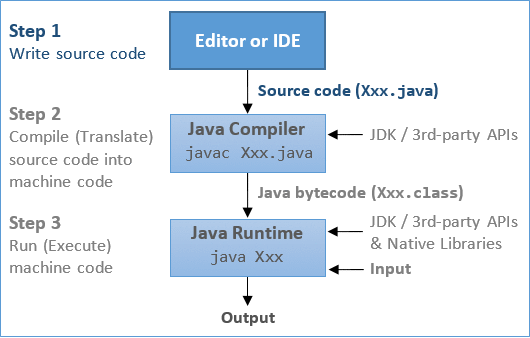
There is no magic behind logging in Java. If you need help with that, check out this Java logging tutorial where I explain everything you need. Just use the Log4j 2.x right away, don’t even think about Log4j 1.x. “I’m starting a new project, what should I do?”. You will get the security fixes, performance improvements, and far more features after migration. Your application will thank you for that. Don’t panic, there is nothing wrong with it. “I’m using Log4j 1.x, what should I do?”. In this blog post, we will help you understand your current Log4j setup – specifically, the log4j 2.x version – and after that, I’ll help you migrate to the latest and greatest Log4j version. All users are advised to migrate to Log4j 2.x. Keep in mind that on August 5th, 2015 the Logging Services Project Management Committee announced that the Log4j 1.x had reached its end of life.
#Notepad on mac to practice java how to
In our recent blog post about the Log4jShell vulnerability, we detailed how to determine whether you are affected, how to resolve the issue, and what we, at Sematext, have done to protect our system and users.
#Notepad on mac to practice java code
Identified as CVE-2021-44228, it lets an attacker take complete control of a machine running Apache Log4j 2 version 2.14.1 or lower, allowing them to execute arbitrary code on the vulnerable server. On December 9, 2021, a critical vulnerability nicknamed Log4Shell was reported. However, before we get into it, let’s address an issue that impacted the community using this framework. If you’re interested in metrics, check out our article on key JVM metrics you should monitor. To be more precise – on Java application logs. Today, we will focus only on a single piece – the logs.

Each of the mentioned pieces is crucial to your application and indeed the overall system observability. Finally, well-crafted logs will provide an invaluable insight into the code logic execution and what was happening in your code. Traces will show you a broader view of the code execution and flow along with code execution metrics. Metrics give you information about the performance of each of the elements of your infrastructure. What do we mean by visibility? Primarily things like application performance via metrics, application health, and availability, its logs should you need to troubleshoot it, or its traces if you need to figure out what makes it slow and how to make it faster. Getting visibility into your application is crucial when running your code in production.



 0 kommentar(er)
0 kommentar(er)
